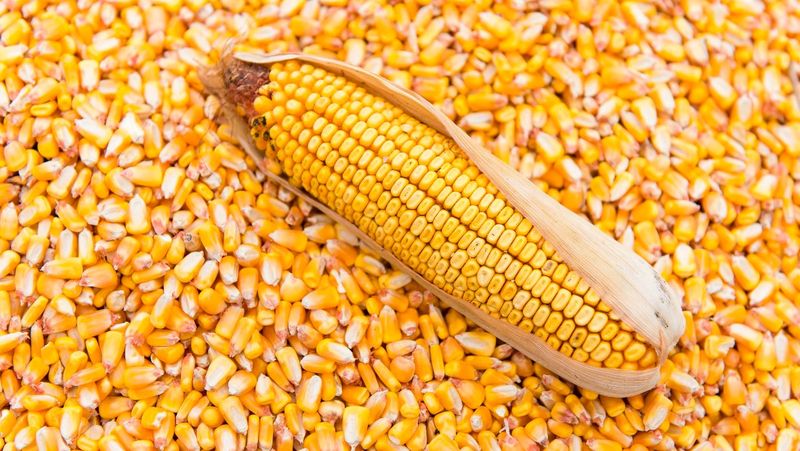Brazil: Exports of corn sharply rise for December

The fear that the exaggerated moderation of prices in October and November would reactivate the export market seems to be confirmed. Perhaps, domestic prices have fallen too soon, with the possibility of an export window and without confirmation of a summer crop saved without weather problems. Despite the growers’ selling intention, which is still present in several regions, this export boom associated with this climate scenario in southern Brazil is reinvigorating the environment of high prices. The concern is that the first quarter will be very focused on soybeans, which could generate further internal price support.
The summer crop is doing well in most regions. However, in the Southeast region and part of the Midwest, corn crops are later, that is, they reach the market after the month of March, after the large flow of the soybean harvest. Of course, a few pivot crops will be reaped in São Paulo and Minas Gerais in January and February. However, we must remember that soybeans arrive in the market earlier this year. In several locations, there will be harvest in January, with the flow increasing for February and March, in a year so far with potential for record production. Soybean logistics must dominate domestic sales, with rising freight, and dryers and warehouses turned to the harvest of soybeans rather than corn.
The other point concerns the South region. Losses in Rio Grande do Sul already exist, but that will not be the reason why there will be no corn harvest in January. Soybeans are later in the state, therefore, the corn harvest has logistic space for January, and the market will be buying the corn that will be harvested at the beginning of the year, since there is no other supply option. The harvest will be more significant in January in the west of the state and Santa Catarina. The other regions of Santa Catarina and south and southwest of Paraná have, seasonally reap from April onwards, some maybe from March.
However, within these seasonal patterns, the corn market may indeed have some price support variable in this first quarter of 2022. Only the difficulty of logistics and freight may already be an additional factor for highs, besides the harvest profile of each region. One can imagine that sales pressures may still arise by producers at the end of the year to free up space and/or get liquidity, as is still happening in Mato Grosso, where deals were registered last week at BRL 65 even in Lucas do Rio Verde. The need for emptying warehouses helped this bearish move in October and November.
This scenario of sales pressure at the end of the year arose due to additional factors, such as the need to purchase raw materials in cash and the refusal of the domestic market to absorb larger volumes to extend stocks. As we have pointed out, this exaggerated price decline could revive the export momentum. There was space in ports, logistics and sales arrangements by producers. Trading companies resumed business abroad. Thus, November was a month of recovery of shipments, reaching 2.86 mln tons. However, internal sales pressure continued and without liquidity of internal consumers. This combination accelerated sales abroad, and the December shipment schedule now reaches 3.6 mln tons, well above expectations for the period this year.
Brazilian corn exports from February to December now amount to 19 mln tons. As we will still have shipments in January, referring to this business year, Brazilian exports may reach 20 mln tons, as initially planned, or even surpass this barrier. For a year of historic production losses of the second crop, these exports of over 20 mln tons might mean much smaller-than-expected carryover stocks.
After the second crop losses, the export forecast was 20 mln tons, which has been revised to 18 mln tons. However, with domestic prices now below port and growers pressing sales, the new number is expected to exceed 20 mln tons again. The issue with these data is that carryover stocks must be reduced to historical levels. The latest number from Safras & Mercado pointed to 5.7 mln tons for carryover stocks for 2022. With higher exports, stocks could drop to less than 4 mln tons. These will be the smallest stocks since 2016.
The combination of these now lower carryover stocks with the loss of production in Rio Grande do Sul could change the price environment in the domestic market, at least in the first four months of 2022. The peak of the soybean harvest, the demand for new corn due to the low stocks of the old crop, the rise in freight rates, and the retraction of stocks in the consumer sector are becoming a concern for the period up to April. After April, the market will depend more on the arrival of later crops, the conditions of the 2022 second corn crop, and the prices charged at ports. The production losses in Rio Grande do Sul and these year-end exports bring new indicators for price formation in the first half of 2022.
Read also
Wheat in Southern Brazil Impacted by Dry Weather and Frosts
Oilseed Industry. Leaders and Strategies in the Times of a Great Change
Black Sea & Danube Region: Oilseed and Vegoil Markets Within Ongoing Transfor...
Serbia. The drought will cause extremely high losses for farmers this year
2023/24 Safrinha Corn in Brazil 91% Harvested
Write to us
Our manager will contact you soon



